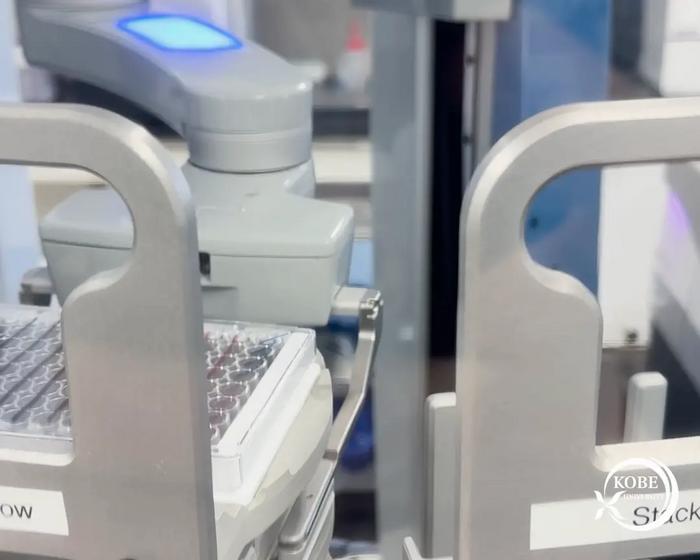In a landmark development poised to reshape the landscape of industrial biomanufacturing, researchers at Kobe University have engineered a groundbreaking technology platform that can rapidly classify and evaluate thousands of enzymes — the vital biological catalysts behind many chemical transformations essential for producing fuels, plastics, and flavors. This breakthrough, now detailed in the journal ACS Catalysis, unveils a sophisticated blend of high-throughput bioinformatics and robotic screening that accelerates enzyme discovery with unprecedented scale and precision.
As the global economy grapples with the dual challenges of dwindling fossil fuel reserves and environmental sustainability, biomanufacturing emerges as a beacon of innovation. By harnessing microorganisms capable of converting renewable raw materials into commercially valuable chemicals under mild conditions, this bio-based avenue promises a greener, more adaptable alternative to traditional chemical processes. Central to this vision are enzymes—complex proteins that direct extraordinarily specific chemical reactions. Yet, tapping into the vast potential of enzymes has remained laborious, as functions of many candidates cataloged in enormous enzyme databases remain speculative and empirically unverified.
Addressing this gap, Tomohisa Hasunuma and his team have pioneered a strategy that methodically organizes enzymes into functionally coherent groups using novel computational algorithms. This classification aids in selecting representative enzymes that typify distinct functional families, significantly reducing experimental screening workload. The ensemble is complemented by a state-of-the-art robotic platform capable of evaluating enzymatic activity against a variety of raw substrates within a mere 24 hours. This integration of in silico grouping and automated functional testing forms a remarkably efficient pipeline poised to screen vast enzyme repertoires rapidly.
Demonstrating the robustness of their platform, the researchers focused on a challenging enzyme family comprising nearly 7,000 variants involved in transforming feedstocks crucial for fuels, polymers, and flavor compounds. The systematic screening led to the discovery of an enzyme variant exhibiting catalytic productivity up to ten times greater than the current industrial benchmark. Equally compelling is the enzyme’s broad substrate promiscuity, a highly prized trait allowing it to process diverse raw materials—augmenting its versatility and potential industrial applicability.
The scientific impact extends beyond mere enzyme identification. By generating extensive datasets mapping enzymatic activity profiles against molecular structure variations, Hasunuma’s team unveiled correlations between specific amino acid residues and functional traits. This data-rich insight illuminates structural determinants of high catalytic efficiency and substrate adaptability. Such knowledge not only deepens mechanistic understanding but also provides actionable targets for rational enzyme engineering, enabling future enhancements through precise modifications rather than trial-and-error approaches.
Moreover, the breadth of this approach sets the stage for harnessing artificial intelligence in enzyme functional prediction. The coupling of large-scale structure-function datasets with machine learning paradigms can enable sophisticated predictive models, empowering researchers to anticipate enzyme behavior from sequence data alone. Hasunuma envisions an iterative loop where AI-driven predictions feed back into experimental validation, thereby expediting the design and discovery process. This alignment of experimental robotics and computational intelligence signals a new era of data-centric biocatalyst development.
The implications of this platform are multifold. Industrial biomanufacturing processes stand to become dramatically more efficient, adaptable, and sustainable by accessing a richer enzymatic toolbox fine-tuned for specific conversions. The discovery of highly productive and versatile enzymes could catalyze a shift away from petroleum-derived raw materials. Additionally, the enabling technology itself promises to become foundational infrastructure, akin to enzyme databases, fostering continuous innovation and discovery in bioengineering.
This research was made possible through support from both the New Energy and Industrial Technology Development Organization and the Japan Society for the Promotion of Science under the Program for forming Japan’s peak research universities (J-PEAKS). Collaborative efforts included expertise from the Tokyo University of Agriculture and Technology, reflecting the interdisciplinary nature of this advance.
Kobe University’s commitment to melding social and natural sciences to create impactful knowledge has been exemplified through this study. Established in 1902, the university continues to position itself at the forefront of scientific innovation with nearly 16,000 students and a strong faculty body dedicated to addressing societal challenges through research excellence.
The identified enzyme’s vast improvements over the existing standard, coupled with the breakthrough in screening methodology, signal a seismic shift not only for enzyme discovery workflows but for the broader biomanufacturing industry. By bridging massive genomic datasets with practical high-throughput screening, the field inches closer to fully realizing the promise of synthetic biology-based production systems that are both economically viable and environmentally sound.
In summary, the novel combination of computational clustering and robotic assay automation crafted by the Kobe University team propels enzyme discovery from a speculative endeavor into a rapid, data-driven enterprise. Their work paves the way for engineered enzymes tailored to diverse industrial needs, potentially revolutionizing the manufacture of fuels, plastics, and flavors derived from sustainable resources. Future developments integrating artificial intelligence forecast an exciting trajectory where enzyme functions are not just discovered but anticipated and designed with high confidence.
As biomanufacturing continues to ascend as a pillar of the green economy, this pioneering platform presents an essential technological foundation. Biomolecular engineers, data scientists, and industrial partners alike will watch closely as this approach matures and diffuses—signaling a transformative phase that aligns biological innovation with industrial scalability to meet pressing global needs.
Subject of Research: Cells
Article Title: Identification of sub-family-specific residues within highly active and promiscuous alcohol dehydrogenases
News Publication Date: 26-Jun-2025
Web References: https://dx.doi.org/10.1021/acscatal.5c02764
Image Credits: Kobe University
Keywords: Enzyme discovery, biomanufacturing, high-throughput screening, robotic assay, alcohol dehydrogenase, enzyme classification, enzyme engineering, artificial intelligence, synthetic biology, industrial biotechnology, renewable chemicals, enzyme databases




